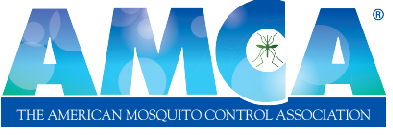Skip to main content
Issues
Select Issue
ARTICLES
,
,
,
,
,
,
,
,
,
,
,
, and
SCIENTIFIC NOTES
THE IMPERATIVE OF AEDES MOSQUITO TESTING FOR ENHANCED DENGUE SURVEILLANCE IN THE UNITED STATES
Solomon K. Birhanie and
Michelle Q. Brown
MOSQUITO SPECIES OF NEW YORK STATE: AN UPDATED CHECKLIST WITH PUBLIC AND VETERINARY HEALTH SIGNIFICANCE
Waheed I. Bajwa,
Liyang Zhou, and
Zahir Shah
FIELD APPLICATION RATE OF NATULAR® SC IN METRIC UNITS TARGETING AEDES ALBOPICTUS
Abigail Golembiewski,
Alexandria Crans,
Nicolas Cepparulo,
Tadhgh Rainey,
Lindsay Baxter, and
Jack Petersen
EVALUATING VECTECH IDX™: AI-DRIVEN IDENTIFICATION FOR ENHANCED VECTOR MANAGEMENT
Casey Hubble,
Mary Sorensen,
Keiko Parker,
Marissa Utterback,
Tyler Stuhaan,
Melissa Cooke, and
Jake Hartle
THE DEVELOPMENT OF A WATER-JACKETED MEMBRANE FEEDER REPELLENT TESTING SYSTEM FOR BLACK FLIES (DIPTERA: SIMULIIDAE)
Skyler M. Kerr,
Elmer W. Gray, and
Darold P. Batzer
An Inexpensive System to Investigate the Daily Rhythms of Insects
Vilma M. Montenegro and
Nathan D. Burkett-Cadena
A Survey for Aedes aegypti in Delaware and the Virus-Positive Pool Rates of Aedes albopictus and Aedes triseriatus for West Nile and Zika Viruses
Jack B. Gingrich,
Troy M. Saltiel,
Zachary Vincent, and
Rebecca Sahraoui
Mosquito Control Emergency Preparedness and Response to Natural Disasters
C. Roxanne Connelly and
Jeff Borchert
Ovicidal and Latent Effects of Pulicaria jaubertii (Asteraceae) Leaf Extracts on Aedes aegypti
Ahmed Z. Shehata,
Tarek M. El-Sheikh,
Raafat M. Shaapan,
Sobhy Abdel-Shafy, and
Abdullah D. Alanazi
Powered by PubFactory
